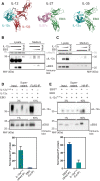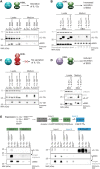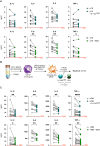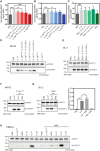Human interleukin-12α and EBI3 are cytokines with anti-inflammatory functions
- PMID: 37878703
- PMCID: PMC10599630
- DOI: 10.1126/sciadv.adg6874
Human interleukin-12α and EBI3 are cytokines with anti-inflammatory functions
Abstract
Interleukins are secreted proteins that regulate immune responses. Among these, the interleukin 12 (IL-12) family holds a central position in inflammatory and infectious diseases. Each family member consists of an α and a β subunit that together form a composite cytokine. Within the IL-12 family, IL-35 remains particularly ill-characterized on a molecular level despite its key role in autoimmune diseases and cancer. Here we show that both IL-35 subunits, IL-12α and EBI3, mutually promote their secretion from cells but are not necessarily secreted as a heterodimer. Our data demonstrate that IL-12α and EBI3 are stable proteins in isolation that act as anti-inflammatory molecules. Both reduce secretion of proinflammatory cytokines and induce the development of regulatory T cells. Together, our study reveals IL-12α and EBI3, the subunits of IL-35, to be functionally active anti-inflammatory immune molecules on their own. This extends our understanding of the human cytokine repertoire as a basis for immunotherapeutic approaches.
Figures






References
MeSH terms
Substances
LinkOut - more resources
Full Text Sources
Molecular Biology Databases

